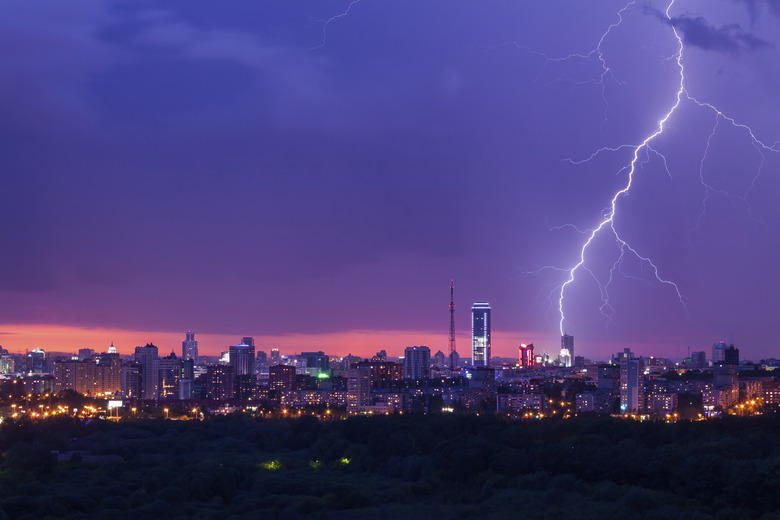Why Do Plants & Animals Need Nitrogen?
Nitrogen is a building-block element both in the atmosphere, where it is the most abundant gas, and in organisms. Its flow through earth's atmospheric, geological and biological systems—the nitrogen cycle—is one of ecology's grand choreographies.
Nitrogen's Biological Role
Nitrogen's Biological Role
Nitrogen, fundamental for cellular structure, is required by plants and animals for production of proteins and amino acids.
Photosynthesis
Photosynthesis
One of the components of chlorophyll, the plant pigment that facilitates photosynthesis, is nitrogen. It plays a role in this immensely important transformation of solar energy.
Availability
Availability
Although 78 percent of our atmosphere is comprised of nitrogen gas, usable nitrogen is a limited commodity. Most organisms can tap the element for growth and function only when, through a process called nitrogen fixation, it has been converted into ammonia or nitrates.
Nitrogen Fixation
Nitrogen Fixation
Fixation accomplished by bacteria in soil—often in symbiotic relationship with fungi and plants—provides the bulk of nitrogen available to the biotic community.
Nitrogen Cycle
Nitrogen Cycle
This gas passes through the atmosphere, rocks, lightning, plants and animals, facilitating growth and being liberated by organic waste and decay in a fundamental biogeochemical cycle.
Cite This Article
MLA
Shaw, Ethan. "Why Do Plants & Animals Need Nitrogen?" sciencing.com, https://www.sciencing.com/do-plants-animals-need-nitrogen-5869687/. 24 April 2017.
APA
Shaw, Ethan. (2017, April 24). Why Do Plants & Animals Need Nitrogen?. sciencing.com. Retrieved from https://www.sciencing.com/do-plants-animals-need-nitrogen-5869687/
Chicago
Shaw, Ethan. Why Do Plants & Animals Need Nitrogen? last modified August 30, 2022. https://www.sciencing.com/do-plants-animals-need-nitrogen-5869687/





